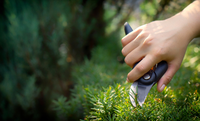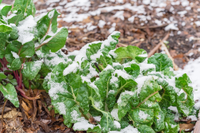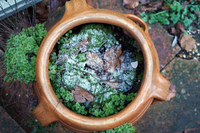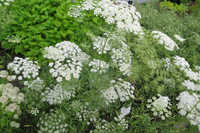
As June rolls around, gardeners across the UK eagerly anticipate the opportunity to shape and refine their outdoor spaces through the art of pruning. This month presents the perfect balance between lush growth and manageable foliage, making it an ideal time to give your garden a trim. From shrubs to trees, knowing what to prune and how to do it can significantly enhance the health and beauty of your garden. Let's delve into the top pruning tasks for June, essential garden tools, and some important tips to keep in mind.
Top 5 to Prune in June
- Flowering Shrubs: After their blooms have faded, flowering shrubs such as lilacs, hydrangeas, and rhododendrons can benefit from a light pruning to remove spent flowers and encourage new growth for next year's display.
- Fruit Trees: June is an opportune time to prune fruit trees to maintain their shape, improve air circulation, and encourage fruit production. Remove any dead or diseased branches, as well as any crossing or overcrowded growth.
- Perennials: Trim back spent flower stalks on perennial plants to tidy up the garden and promote further blooming. Be sure to leave some foliage intact to support the plant's energy production.
- Hedges: Keep hedges in shape by giving them a trim in June. Regular pruning helps to maintain dense growth and keeps hedges looking neat and tidy throughout the growing season.
- Climbing Plants: Train and prune climbing plants such as roses and clematis to guide their growth and encourage flowering. Remove any dead or tangled growth and tie new shoots to their supports.

Essential Garden Tools for Pruning
- Secateurs: Ideal for precise cuts on smaller branches and stems.
- Loppers: Designed for cutting thicker branches with greater leverage.
- Pruning Saw: Useful for tackling larger branches that are too thick for secateurs or loppers.
- Garden Gloves: Protect your hands from thorns, splinters, and rough surfaces while pruning.
- Shears: Perfect for shaping hedges and trimming soft foliage.
Keep This in Mind When Pruning
- Know Your Plants: Different plants have different pruning requirements. Familiarise yourself with the specific needs of each plant species before pruning to avoid damaging them.
- Timing is Key: June is generally a good time for pruning, but be mindful of plants that bloom on old wood, as pruning them now may affect next year's flowers. Research the flowering habits of your plants before pruning.
- Prune Strategically: Focus on removing dead, damaged, or diseased branches first, followed by any crossing or overcrowded growth. Aim to maintain the natural shape and balance of the plant while pruning.
- Sterilise Your Tools: To prevent the spread of diseases between plants, sterilise your pruning tools with a solution of bleach and water or rubbing alcohol before and after each use.
- Take It Slow: Avoid over-pruning, especially if you're unsure about how much to cut. It's better to start conservatively and make additional cuts as needed rather than removing too much at once.
By following these top pruning tasks, equipping yourself with the essential garden tools, and keeping these important tips in mind, you'll be well on your way to maintaining a healthy and beautiful garden throughout June and beyond. Happy pruning!




